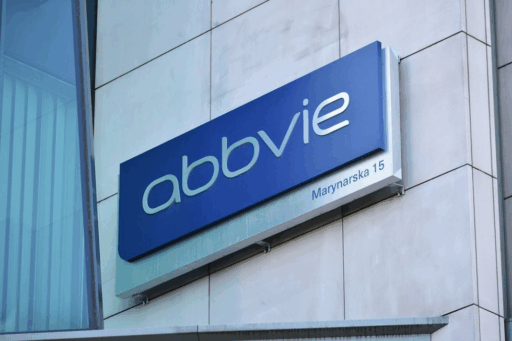- AbbVie Sustainability Strategy and Goals
- Climate Action: Reducing Environmental Footprint
- Responsible Sourcing and Ethical Practices
- Access to Healthcare and Innovation
- Diversity, Equity, and Inclusion
- Measurable Impacts
- Challenges and Areas for Improvement
- Future Plans and Long-Term Goals
- Comparisons to Industry Competitors
AbbVie, a global biopharmaceutical leader, is committed to improving the lives of patients through innovative medicines and transformative healthcare solutions. Since its separation from Abbott Laboratories in 2013, AbbVie has evolved into a company at the forefront of biotechnology and pharmaceutical innovation. Known for its blockbuster drugs, including Humira (adalimumab) for autoimmune diseases and Imbruvica for cancer, AbbVie has played a significant role in transforming the landscape of modern medicine.
However, beyond its commitment to improving health outcomes, AbbVie is also focusing on achieving long-term sustainability within its operations and across the healthcare system. Sustainability has become a key component of AbbVie’s corporate responsibility, with the company striving to reduce its environmental footprint, ensure ethical sourcing, promote diversity and inclusion, and contribute to the betterment of global communities.
In this detailed article, we will explore AbbVie’s sustainability strategy, key initiatives, measurable impacts, challenges, and future goals. We will also discuss how AbbVie is leveraging innovation and technology to build a sustainable future in the biopharmaceutical industry.
AbbVie Sustainability Strategy and Goals
AbbVie’s sustainability strategy is guided by its core values of innovation, integrity, and patient-centric care. The company’s approach is rooted in addressing both environmental and social challenges through collaboration, transparency, and long-term thinking. AbbVie has set clear Environmental, Social, and Governance (ESG) goals to integrate sustainability into all aspects of its business.
The company’s sustainability framework focuses on five main pillars:
- Climate Action
- Responsible Sourcing and Ethical Practices
- Access to Healthcare and Innovation
- Diversity, Equity, and Inclusion
- Community Impact
Climate Action: Reducing Environmental Footprint
Like many large corporations, AbbVie recognizes its responsibility to reduce its environmental footprint and combat climate change. The biopharmaceutical industry has a significant impact on the environment through energy use, waste generation, and emissions from manufacturing processes. AbbVie is committed to mitigating these impacts by focusing on reducing its carbon emissions, energy consumption, and water usage.
Net Zero and Carbon Emissions
AbbVie has committed to achieving net-zero greenhouse gas emissions by 2050, in line with the Paris Climate Agreement. To meet its climate targets, the company is focusing on reducing emissions across Scope 1 (direct emissions), Scope 2 (indirect emissions from energy), and Scope 3 (supply chain and product use emissions).
Key Emissions Reduction Strategies:
- Energy Efficiency Improvements: AbbVie is focused on improving the energy efficiency of its manufacturing sites and corporate offices. This includes upgrades to energy-efficient equipment, lighting systems, and HVAC systems.
- Renewable Energy: The company has committed to powering its operations with 100% renewable energy by 2030. Currently, AbbVie sources 50% of its energy from renewable sources.
- Sustainable Operations: AbbVie continues to invest in sustainable infrastructure, including implementing green building practices and energy-saving technologies in its facilities.
Water Stewardship
Water conservation is a critical area of focus for AbbVie due to its significant water usage in drug manufacturing processes. The company has implemented several water-saving initiatives to reduce consumption across its manufacturing sites and improve water efficiency. AbbVie has committed to reducing water use per unit of production by 20% by 2025.
- AbbVie has also implemented closed-loop water systems in some facilities to minimize water waste and reduce reliance on local water sources.
- The company works with local communities to ensure water use is optimized while maintaining environmental sustainability.
Achievements in Climate Action
- 10% reduction in GHG emissions from 2018 to 2020.
- AbbVie’s renewable energy usage increased from 30% to 50% between 2018 and 2022.
- The company has reduced water consumption by 10% across its manufacturing operations, exceeding initial targets.
Responsible Sourcing and Ethical Practices
AbbVie recognizes that sustainable business practices extend beyond the four walls of its operations. The company works diligently to ensure that its supply chain meets ethical, social, and environmental standards. This includes responsible sourcing of materials, adherence to human rights, and ensuring that suppliers comply with AbbVie’s Supplier Code of Conduct.
Ethical Sourcing and Transparency
AbbVie works closely with suppliers to ensure responsible sourcing of raw materials, particularly in relation to conflict minerals used in the production of pharmaceutical products and medical devices. The company has implemented rigorous due diligence processes to ensure the traceability of materials used in its products.
AbbVie also works with organizations like the Responsible Business Alliance (RBA) to ensure that its suppliers adhere to ethical labor practices, fair wages, and safe working conditions.
Supply Chain Integrity
To further ensure transparency, AbbVie regularly audits its supply chain to verify the sustainability and ethical practices of its suppliers. The company uses blockchain technology to track and trace the journey of raw materials from source to final product, ensuring that they are ethically sourced and comply with the company’s sustainability standards.
Access to Healthcare and Innovation
AbbVie is dedicated to advancing healthcare access, particularly for underserved populations in low- and middle-income countries. The company’s efforts are focused on making its medicines more affordable and accessible to people in regions where access to healthcare is limited.
Global Health Programs
AbbVie has partnered with various organizations to tackle global health challenges, including HIV/AIDS, hepatitis C, and malaria. The company has provided donations of medicines, medical equipment, and funding for healthcare infrastructure in underdeveloped areas.
- AbbVie has also launched several initiatives aimed at improving healthcare access in sub-Saharan Africa through mobile health clinics and telemedicine services.
- The company has made significant progress in expanding access to its therapies through global partnerships and patient assistance programs.
Innovation for Underserved Communities
AbbVie is continually developing new, innovative treatments for diseases that disproportionately affect low-income populations. By focusing on affordable treatment options and working with international health organizations, AbbVie is playing a critical role in addressing global health disparities.
Diversity, Equity, and Inclusion
Diversity and inclusion are fundamental to AbbVie’s operations and culture. The company is committed to creating an inclusive workforce that reflects the diverse communities it serves. AbbVie’s diversity and inclusion efforts span employee engagement, talent acquisition, leadership development, and community outreach.
Workforce Diversity
AbbVie has made significant progress in promoting gender equality and racial diversity within its workforce. The company has established targets to increase representation of women and minorities in senior leadership positions.
- Women in leadership: AbbVie aims to increase the number of women in senior leadership roles to 40% by 2025.
- Diversity training: The company has implemented unconscious bias training for all employees to foster an inclusive work environment.
Social Impact and Community Engagement
AbbVie is dedicated to improving the lives of communities where it operates through corporate philanthropy and volunteer programs. Through the AbbVie Foundation, the company funds programs that support healthcare, education, and economic development.
AbbVie’s employees are encouraged to give back to their communities through volunteer programs. The company also matches employee donations to charities and has donated millions of dollars to global disaster relief efforts.
Measurable Impacts
AbbVie tracks its sustainability progress through a variety of metrics and goals. Some of the company’s key sustainability achievements include:
| Metric | Goal | 2023 Status |
|---|---|---|
| GHG Emissions Reduction | 50% reduction (Scope 1 and 2) by 2025 | 20% reduction achieved since 2018 |
| Renewable Energy Usage | 100% renewable energy by 2025 | 50% renewable energy usage in 2022 |
| Water Use Efficiency | 20% reduction per unit of production by 2025 | 10% reduction achieved in water consumption |
| Workforce Diversity | 40% women in leadership by 2025 | 30% women in senior leadership positions |
| Community Engagement | $100 million in philanthropic giving by 2025 | $50 million in donations and grants in 2023 |
Challenges and Areas for Improvement
While AbbVie has made significant progress in its sustainability journey, several challenges remain:
- Scope 3 emissions: As with many large companies, Scope 3 emissions (those from the supply chain and product use) represent the largest portion of AbbVie’s carbon footprint. Reducing these emissions will require collaboration across its extensive global network.
- Sustainable sourcing at scale: While AbbVie has made strides in sourcing sustainable raw materials, scaling these efforts across the global supply chain remains complex and resource-intensive.
- Circularity: The company must continue to innovate in circular economy practices, particularly in pharmaceutical packaging and medical device recycling.
Future Plans and Long-Term Goals
AbbVie’s sustainability vision extends beyond its current achievements. The company is focused on several key initiatives for the future:
- Achieving net-zero emissions across Scope 1, 2, and 3 by 2040.
- Expanding healthcare access to underserved populations globally.
- Ensuring 100% of its packaging is recyclable or made from recycled content by 2025.
- Increasing the use of sustainable and regenerative materials in its products.
Comparisons to Industry Competitors
| Company | Net Zero Target | Renewable Energy Goal | Diversity and Inclusion | Healthcare Access Programs |
|---|---|---|---|---|
| AbbVie | 2040 | 100% by 2025 | 40% women in leadership by 2025 | Expanding global access to medicines |
| Pfizer | 2050 | 100% by 2025 | 35% women in leadership | $1 billion in community health funding |
| Johnson & Johnson | 2035 | 100% by 2030 | 45% women in leadership | $300 million for health equity programs |
AbbVie has set a strong foundation for sustainability and social responsibility within the biopharmaceutical sector. Through its ambitious goals on carbon emissions, renewable energy, and global health access, the company is leading by example. However, achieving net-zero emissions and addressing Scope 3 emissions in a meaningful way will require continued innovation and collaboration with suppliers, customers, and communities.
AbbVie’s focus on patient-centered care and global health equity sets it apart from many of its peers in the pharmaceutical industry, making it a company to watch in the years to come as it continues to evolve into a truly sustainable business model.
Sources
AbbVie 2023 Corporate Responsibility Report: https://www.abbvie.com/about-us/corporate-responsibility.html
Science-Based Targets Initiative (SBTi): https://sciencebasedtargets.org
Global Health Programs: https://www.abbvie.com/about-us/global-health.html
Johnson & Johnson 2023 Sustainability Report: https://www.jnj.com/sustainability
Pfizer 2023 Sustainability Report: https://www.pfizer.com/sustainability






